
Intellicast S4E21 – A Preview of the New Canadian Research Insights Council (CRIC) Event with Arundati Dandapani
June 25, 2021
Data Quality 101: Tips For A Great Screener
June 30, 2021Because our perceptions of brands are always changing, brand awareness is one of the key measures in market research that we study regularly. How does emotion affect brand awareness? In our latest round of research on research, we looked at how respondents’ emotional state impacted their awareness and ratings of certain brands.
Respondents were asked how they were feeling at the time they took our survey. The most common response was happy, followed by stressed. Respondent totals for each emotion can be seen below.
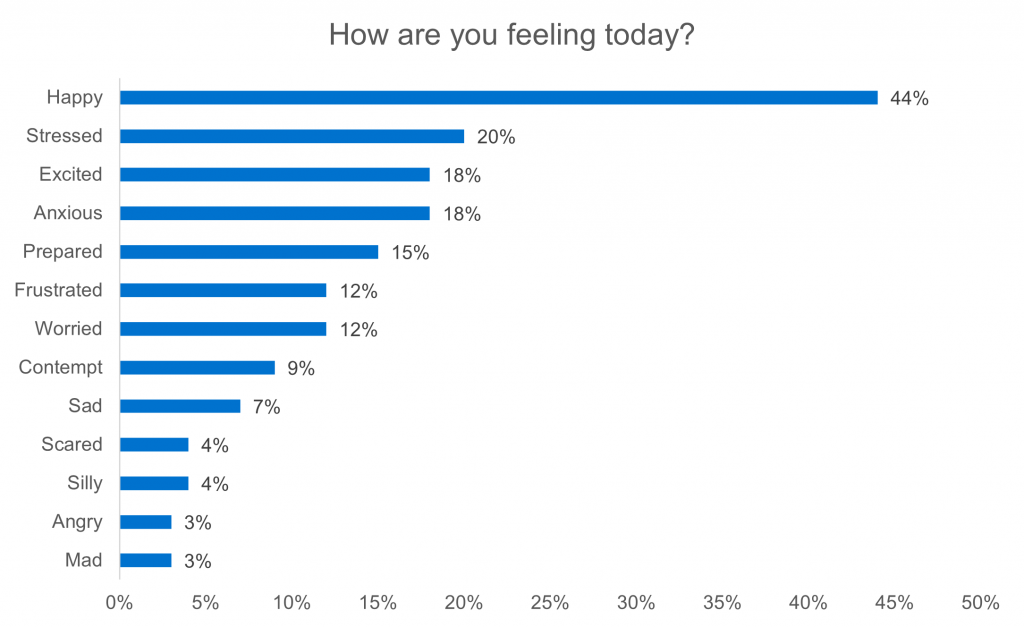
Emotions and Brand Awareness
When segmented by emotion, there are clear differences in respondents’ brand awareness. For example, when asked if they were aware of McDonald’s, those who felt stressed, anxious, or prepared had the highest brand awareness at 91%. Meanwhile, those who felt mad, angry, or scared had significantly lower brand awareness.

A similar pattern can be seen across other brands. For American Airlines, we saw that those who felt mad had the lowest brand awareness, followed by those who felt silly. We again saw that those who felt anxious had the highest brand awareness, followed by those who felt worried or stressed.

Looking at brand awareness for Bose, those who felt silly or mad again had significantly lower awareness. We also see those who felt anxious, worried, or prepared had the highest brand awareness at 69%.

Overall, it seems that those who feel mad, angry, or silly tend to have lower brand awareness, but those who feel some type of stress, anxiety, or preparedness are likely to have higher awareness. It is also interesting to note that even though emotions like happy and sad are the opposites of one another, brand awareness for these respondents is consistent — there is only a 1-2% difference in awareness among happy and sad respondents across brands.
Emotions and Brand Rating
Respondents were also asked to rate the brands they are aware of on a 5-point scale. For McDonald’s, we saw that those who felt excited or mad rated the brand significantly lower than other respondents on average. Meanwhile, those who were stressed, anxious, sad, or frustrated rated McDonald’s the highest.
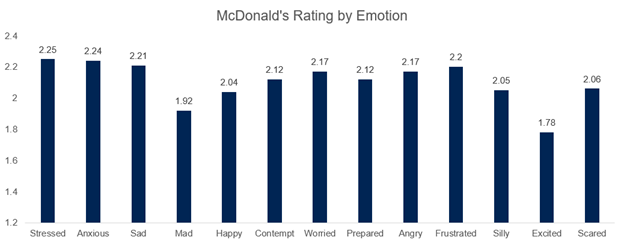
Similar ratings were seen across emotions for American Airlines; those who felt excited again rated the brand the lowest, followed by those who felt mad. We again saw those who felt stressed, anxious, and frustrated rate the brand the highest.
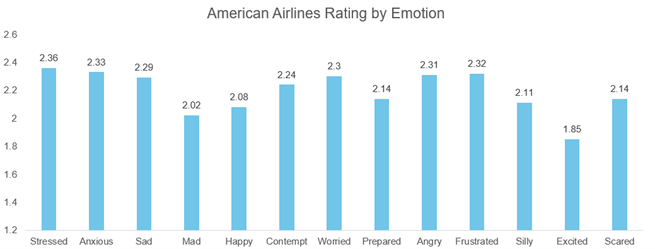
Those who felt contempt actually had the highest brand rating for Bose, followed by those feeling stressed, angry, or frustrated. Those who were mad or excited again showed relatively low brand awareness, although for Bose the lowest brand awareness was seen among those who felt scared.
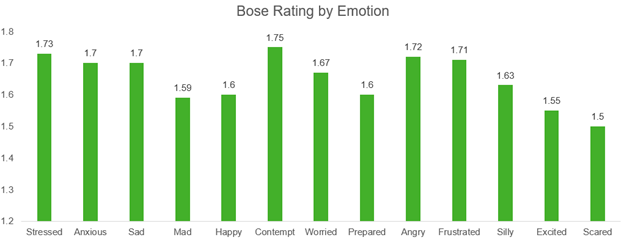
Emotions by Panel
Knowing that factors such as emotion may affect brand awareness or ratings, it is also important to look at respondents’ emotions by panel. For example, there is a 16% difference between panels B and F in those who felt happy when taking the survey.

We also see that while a relatively low proportion of respondents felt mad in each panel, panel C had a significant number of mad respondents at 6%.
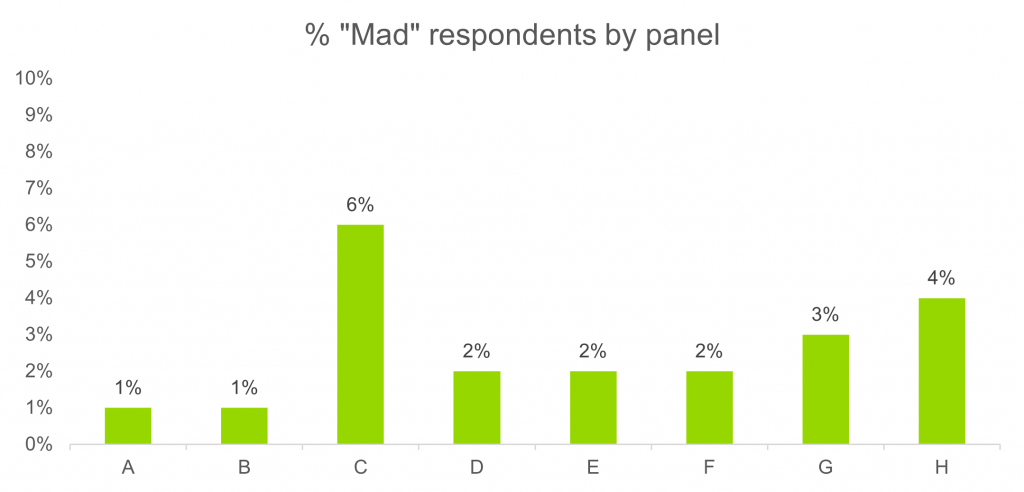
Panel C also had the highest number of respondents who felt silly at 7%, followed by panel H at 5%.
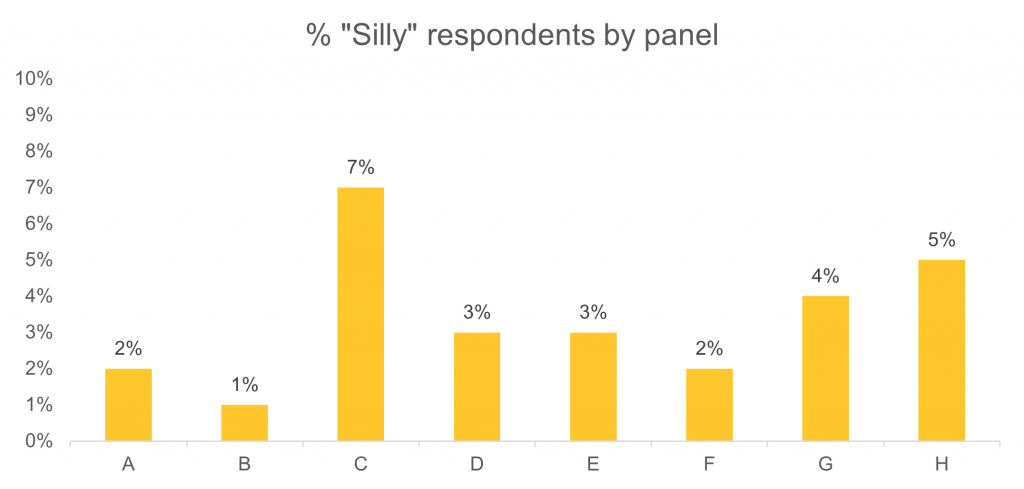
These differences in the emotional composition of each panel may show themselves as differences in brand awareness. For example, when looking at the brand awareness for McDonald’s by panel, we can see a 17% difference between panels B and H. Panel C also has notably low brand awareness.
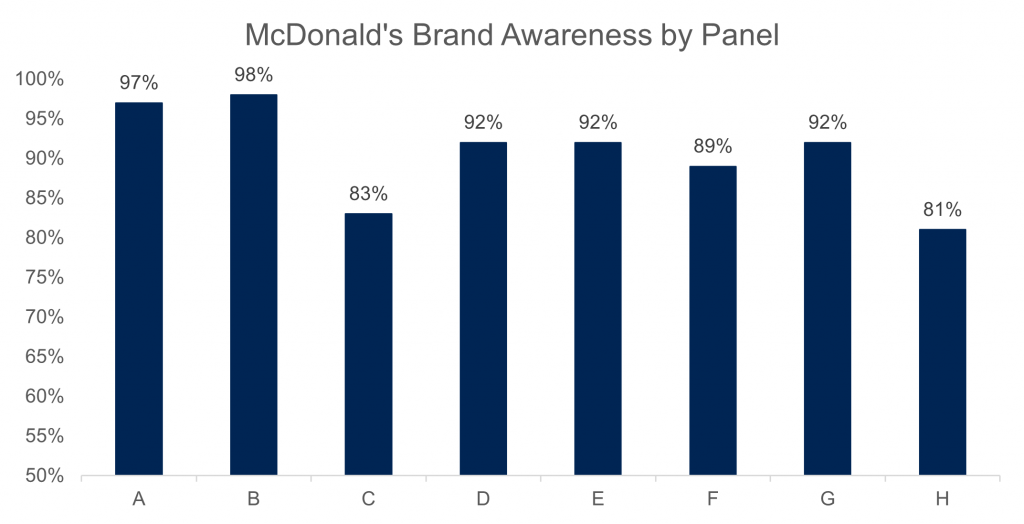
Looking at how brand awareness and ratings vary by emotion shows just how much respondents’ opinions can fluctuate and change. It also shows how different panels can be and how this might affect your studies. That’s why it’s important to take a blended approach to sample.
Here at EMI, we use Intelliblend®, our unique methodology of sample blending, to make sure you get the most representative sample and data that won’t be swayed by differences in emotion by panel. Click here to learn more about Intelliblend and check out the blog below to learn more about how brand awareness and ratings can be impacted!
Unaware, Confusion, or Inattentive – Factors That Can Sway Brand Awareness




